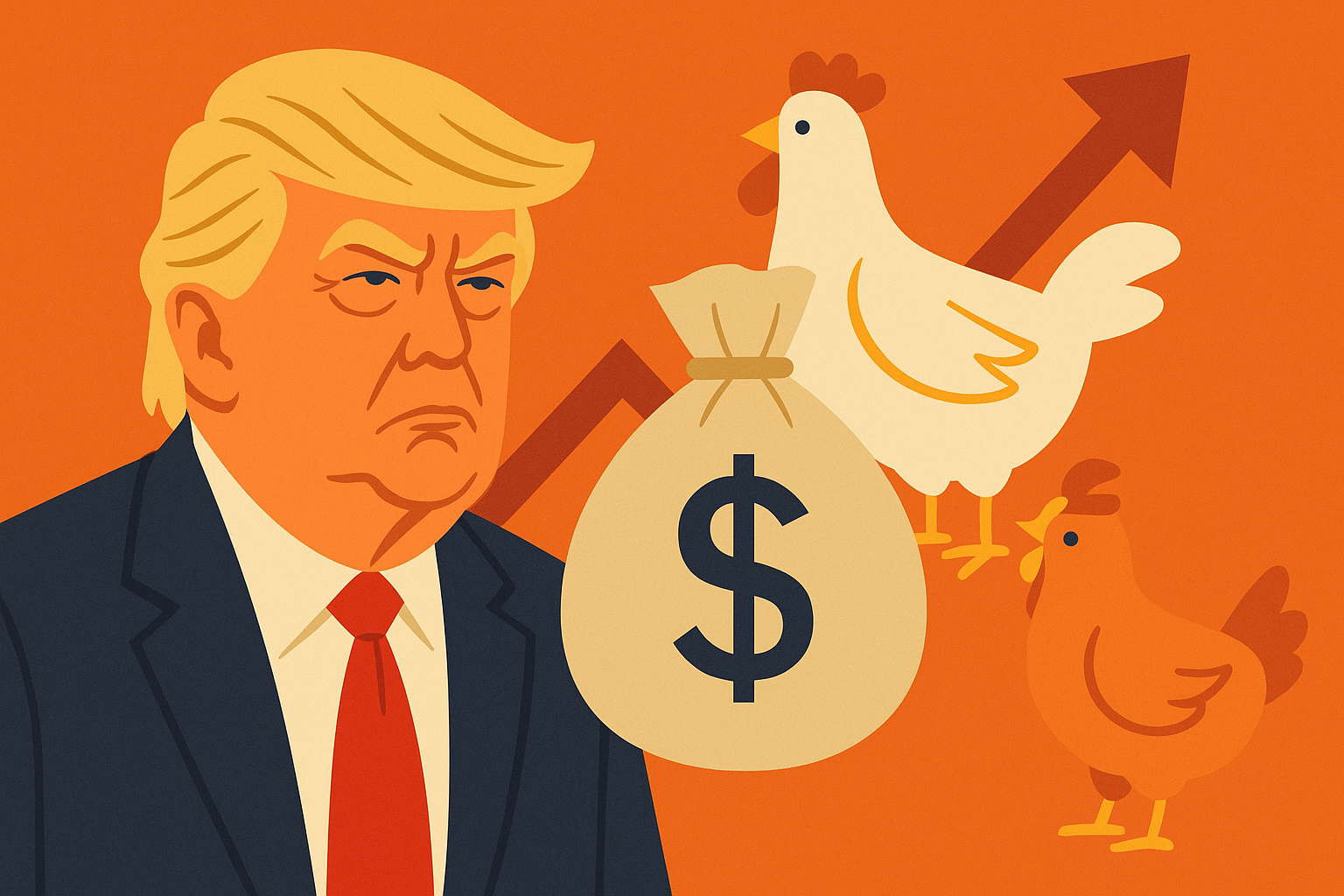Donald Trump’s aggressive tariff campaign has generated nearly $50 billion in additional customs revenue for the U.S., as global trading partners largely hold back from retaliating, opting instead for cautious negotiations to avoid further escalation.
Four months into what many have described as Trump’s second major trade war, only China and Canada have implemented significant countermeasures in response to the sweeping tariffs imposed by the U.S. administration. These include a 10% global tariff, 50% duties on steel and aluminium, and 25% levies on autos.
According to U.S. Treasury data, customs revenues reached a record $64 billion in Q2 2025 — a $47 billion increase year-over-year. By contrast, countries that imposed retaliatory tariffs, such as China, saw far less impact. China’s customs revenue rose just 1.9% in May compared to the previous year, and Canada has yet to publish updated figures.
Muted Global Response
Despite Trump’s tariffs reaching levels unseen since the 1930s, the feared global retaliation has largely failed to materialize. The European Union, for example, has delayed implementation of planned counter-tariffs while linking negotiations to an August 1 deadline for trade talks. Even Canada, which initially imposed C$155 billion in retaliatory duties, has softened its stance under economic and political pressure.
Mexico, the U.S.’s largest trading partner, declined to retaliate after being targeted with 25% tariffs in March. President Claudia Sheinbaum has instead prioritized maintaining economic stability and reaching a negotiated deal.
Many economists and diplomats attribute the lack of retaliation to the United States’ unique leverage. As the world’s largest consumer market, the U.S. wields significant influence over global trade flows, making it economically risky for countries to escalate. Trump has also threatened to double down on tariffs against nations that oppose his policies — a warning that appears to have been effective.
Avoiding the 1930s Trap
Unlike the trade conflicts of the 1930s, which crippled global commerce, today’s international system is built around the U.S. as the central hub. This has discouraged countries from initiating direct confrontations.
“Retaliation is not cowardice — it’s economic logic,” said Marta Bengoa, an international economics professor at the City University of New York. “The structure of today’s global economy makes it much harder to push back against the U.S. without incurring substantial costs.”
Capital Economics estimates that a high-intensity trade war, with reciprocal tariffs averaging 24%, could shave 1.3% off global GDP over two years. A more modest 10% tariff regime would cut only 0.3%.
Corporate and Diplomatic Calculations
Multinational companies like Apple, Adidas, and Mercedes have adapted by redistributing the cost burden globally, attempting to limit the impact on U.S. consumers. Simon Geale of supply chain consultancy Proxima said global brands are absorbing some costs through efficiency measures while spreading others across different markets.
Meanwhile, political and diplomatic factors continue to play a role in shaping trade policy. In Europe, fears that a breakdown in trade negotiations could jeopardize U.S. security support for Ukraine have contributed to Brussels’ cautious stance. EU officials have acknowledged that discussions with Washington encompass both trade and broader strategic cooperation.
Trump’s Bilateral Tactics
Trump’s approach has also involved targeting individual countries to secure concessions. Last week, he threatened Brazil with a 50% tariff, citing political grievances. Within the EU, divisions among member states and concern over inflation risks have made unified resistance difficult.
In Canada, Prime Minister Mark Carney has abandoned plans for a digital services tax and declined to match Trump’s steel tariff hike, despite earlier campaign promises to challenge the U.S. strategy. Analysts describe Canada’s position as pragmatic, given its economic dependence on the U.S., which accounts for 20% of its GDP.
Looking Ahead
As the August 1 deadline for negotiations approaches, the global trade community is closely watching whether retaliatory action will intensify or if more countries will continue to avoid confrontation. The European Commission has published a list of €72 billion in potential U.S. goods subject to tariffs — including aircraft, cars, and bourbon — though without specific rates to avoid provoking a harsh U.S. response.
Trade commissioner Maroš Šefčovič stated that if Trump proceeds with a 30% tariff on EU exports, “transatlantic trade would be almost impossible,” suggesting that retaliation could be inevitable.
Creon Butler of Chatham House noted that countries must weigh short-term benefits of restraint against long-term risks to their position in global supply chains. “In the short term, avoiding escalation makes sense,” he said. “But in the long run, countries will need to decide how far they’re willing to go to protect their trade interests outside of the U.S. orbit.”



